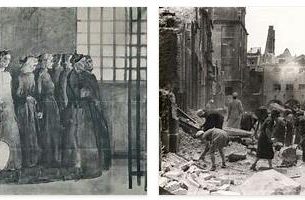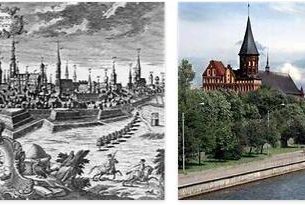All tips (10%) and other additional payments are best left after the service, in case it was of acceptable quality. But you shouldn’t deprive service personnel of tips – many of them work for a meager salary, receiving the main income from tips. In restaurants, tips are usually given directly into the hands of the waiter after paying the bill, rather than being left on the table. In a taxi, the easiest way is to simply round the amount up.
Albania: Money and currency of Albania
Lek (ALL), equal to 100 kindarks. In circulation there are banknotes of 100, 200, 500, 1000 and 5000 lek denominations of various modifications, as well as coins of 1, 2, 5, 10, 20, 50 and 100 lek. There are banknotes of the same denomination of three different issues, differing from each other in appearance. US dollars and euros have free circulation along with the national currency.
Albania: Albanian Cuisine
According to vaultedwatches, Albanian cuisine is a colorful mixture of ancient Illyrian traditions with Turkish, Greek and Slavic recipes.
The basis of all dishes is meat and vegetables. Here you can try quite traditional shish kebabs, meatballs “chofte” and other familiar dishes. However, local chefs bring their own traditions to many of them.
Popular local dishes are “schumlek” (onion stew), “ferges” (beef stew), “rosto-mi-salche-kozi” (roast beef in sour milk sauce), “tave-kozi” and “tave-elbasani” (lamb with yogurt), “kukurech” (sheep liver stuffed with vegetables and meat), “chomlek” (beef stew), stew with potatoes and vegetables “guvech”, “sarma” (a kind of cabbage rolls), “fargesa-tyrant” (a dish of fried meat, liver, eggs and tomatoes) and even a whole baked sheep’s head (a festive dish), as well as a variety of pies with minced meat “romstek”, meat on a grill with vegetables and other typical Balkan dishes with an obvious Turkish “flavor”.
Meat is served with rice (“pilava”) and a variety of greens. Fish also feature prominently in local cuisine, with trout and carps from the Ohrid and Shkoder lakes being preferred. Sea fish, cooked quite traditionally, is usually an everyday dish. In summer, you should try a cold “tarator” made of sour milk, cucumbers, grated walnuts and onions, as well as cold yogurts and cucumber soup – an analogue of our okroshka.
Desserts are typically shaf sweets, sweet rice cakes, various sheep’s milk puddings, honey cakes, and candied fruit. The local ice cream “akullore” has a very peculiar taste.
Albanians drink coffee as Turkish (“Cafe Turke”) and espresso (“Cafe Express”), both of which are brewed stronger than in neighboring countries. Local wines are not well known on the international market, but they have a fairly good taste and low cost, while white wine is usually slightly better than red. “Rakia” (grape brandy) is most often taken as an aperitif, local brandies, anise liqueur “ouzo”, various fruit liqueurs and “fernet” herbal tincture produced in Korce are of good quality. Imported drinks are sold everywhere, including Austrian beer, Macedonian wines and Greek ouzo. Many “local” beers, oddly enough, are also imported from Macedonia.
Albania: Culture of Albania
Holidays:
- January 1 – New Year
- January-February – Great Bayram (Eid al-Adha, Day of Sacrifice)
- March – Eid al-Adha and Sultan – Bayram
- April – Good Friday



